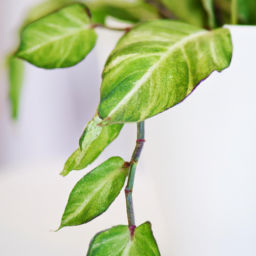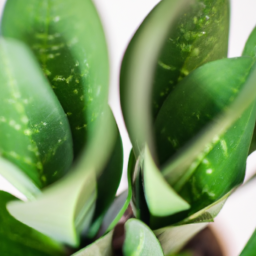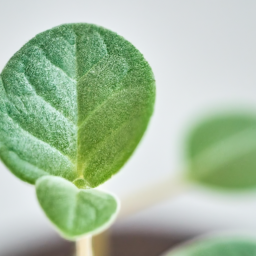
Are you looking to brighten up your office space with some greenery but don’t have much natural light to work with? Don’t worry, we’ve got you covered! In this blog post, we’ll be discussing the best office plants that thrive in low-light conditions. So if you’re in need of some plant inspiration for your dimly lit workspace, keep reading to discover some great options that will add a touch of nature to your office without needing much sunlight.
Benefits of Low-Light Office Plants
When it comes to choosing plants for your office space, it’s important to consider the lighting conditions. If your office lacks natural light, don’t worry – there are plenty of low-light office plants that can thrive in such environments. Not only do these plants add a touch of greenery to your workspace, but they also come with a host of benefits that can improve your overall well-being.
Improves Air Quality
One of the key benefits of having low-light office plants is that they help improve air quality. Plants are natural air purifiers, absorbing carbon dioxide and releasing oxygen through the process of photosynthesis. In addition, certain plants can also remove toxins such as formaldehyde, benzene, and trichloroethylene from the air, helping to create a healthier work environment for you and your colleagues.
Some of the best low-light office plants for improving air quality include the snake plant, spider plant, and peace lily. These plants are known for their ability to thrive in low-light conditions while effectively filtering out harmful pollutants from the air.
By incorporating these plants into your office space, you can breathe easier knowing that you are surrounded by cleaner, fresher air. This can lead to a host of health benefits, including reduced symptoms of allergies and respiratory conditions, as well as improved focus and productivity.
Reduces Stress and Boosts Mood
In addition to improving air quality, low-light office plants can also help reduce stress and boost mood. Studies have shown that being in the presence of plants can have a calming effect on the mind, helping to lower stress levels and promote relaxation.
Plants have also been found to have a positive impact on mental health, with research suggesting that they can help reduce symptoms of anxiety and depression. By bringing nature indoors, you can create a more peaceful and inviting work environment that promotes overall well-being.
Some of the best low-light office plants for reducing stress and boosting mood include the pothos plant, Chinese evergreen, and ZZ plant. These plants are not only easy to care for but also have a soothing presence that can help create a more serene atmosphere in your office.
Increases Productivity and Creativity
Another benefit of having low-light office plants is that they can help increase productivity and creativity. Research has shown that having plants in the workplace can lead to improved concentration, memory, and cognitive function.
Plants have also been found to stimulate creativity, with studies suggesting that they can help generate new ideas and problem-solving skills. By surrounding yourself with greenery, you can create a more inspiring and energizing work environment that encourages innovation and productivity.
Some of the best low-light office plants for increasing productivity and creativity include the rubber plant, dracaena, and parlor palm. These plants not only thrive in low-light conditions but also have a vibrant presence that can help spark your imagination and drive.

Top 5 Office Plants That Thrive in Low-Light Environments
Hello there! Are you looking to spruce up your office space with some greenery but worried about the lack of natural light? Don’t fret! There are plenty of office plants that can thrive in low-light environments. In this guide, I will introduce you to the top 5 office plants that are perfect for spaces with minimal sunlight.
Snake Plant
The snake plant, also known as mother-in-law’s tongue, is a popular choice for office spaces due to its ability to thrive in low-light conditions. This hardy plant has tall, upright leaves that come in various shades of green and yellow, adding a touch of elegance to any workspace. Snake plants are also known for their air-purifying properties, making them a great choice for improving indoor air quality.
When caring for a snake plant in a low-light environment, be sure to water it sparingly as overwatering can lead to root rot. Place your snake plant near a window that receives indirect sunlight or under artificial lighting to ensure it gets the light it needs to thrive.
In addition to being low-maintenance, snake plants are also known for their ability to survive in a variety of conditions, making them a perfect choice for busy office environments where natural light may be limited.
ZZ Plant
The ZZ plant is another excellent choice for office spaces with low-light conditions. This plant has glossy, dark green leaves that add a touch of sophistication to any room. The ZZ plant is also known for its ability to thrive in low-light environments, making it a popular choice for offices with limited natural light.
When caring for a ZZ plant in a low-light environment, be sure to water it sparingly as overwatering can lead to root rot. Place your ZZ plant in a spot that receives indirect sunlight or under artificial lighting to ensure it gets the light it needs to thrive.
In addition to being low-maintenance, ZZ plants are also known for their air-purifying properties, making them a great choice for improving indoor air quality in office spaces.
Pothos
Pothos, also known as devil’s ivy, is a versatile and easy-to-care-for plant that thrives in low-light environments. This plant has heart-shaped leaves that come in various shades of green, making it a popular choice for adding a pop of color to office spaces. Pothos is also known for its ability to purify the air, making it a great choice for improving indoor air quality.
When caring for a pothos plant in a low-light environment, be sure to water it regularly and allow the soil to dry out between waterings. Place your pothos plant in a spot that receives indirect sunlight or under artificial lighting to ensure it gets the light it needs to thrive.
In addition to being low-maintenance, pothos plants are also known for their ability to grow quickly, making them a great choice for adding a touch of greenery to office spaces with minimal sunlight.
By choosing one of these top 5 office plants that thrive in low-light environments, you can add a touch of greenery to your workspace without worrying about the lack of natural light. These plants are not only easy to care for but also have air-purifying properties, making them a great choice for improving indoor air quality in office spaces. So go ahead and bring some greenery into your office today!

Tips for Caring for Office Plants in No-Light Conditions
Choosing the Right Plants
When it comes to selecting office plants that thrive in low-light conditions, it’s important to choose varieties that are well-suited for this environment. Some plants are naturally more adaptable to low light levels, making them ideal choices for your office space. Consider plants such as snake plants, pothos, and peace lilies, as these are known to thrive in low-light conditions.
Additionally, it’s important to consider the size of the plant and how much space it will need to grow. Some plants may require more room to spread out, while others can thrive in smaller pots. Make sure to choose plants that are appropriate for the size of your office space.
Before purchasing any plants, do some research on their specific care requirements. Some plants may need more frequent watering or specific soil conditions to thrive in low-light settings. By understanding the needs of your chosen plants, you can ensure they will flourish in your office environment.
Proper Watering Techniques
One of the most important aspects of caring for office plants in no-light conditions is proper watering. While it may seem counterintuitive, some plants actually require less water when they are in low-light environments. Overwatering can lead to root rot and other issues, so it’s important to monitor the moisture levels of your plants carefully.
When watering your office plants, make sure to check the soil moisture before adding more water. Stick your finger into the soil to feel for moisture – if it feels dry to the touch, it’s time to water. Be sure to water your plants thoroughly, allowing excess water to drain out of the bottom of the pot to prevent waterlogged roots.
It’s also important to use room-temperature water when watering your plants, as cold water can shock the roots. Consider using a watering can with a narrow spout to control the flow of water and avoid overwatering your plants.
Creating the Right Environment
In addition to choosing the right plants and watering them properly, creating the right environment for your office plants is crucial for their health and growth. While natural light may be limited in your office space, there are other ways to provide your plants with the light they need to thrive.
Consider supplementing natural light with artificial light sources, such as grow lights or fluorescent bulbs. These can help mimic natural sunlight and provide your plants with the light they need to photosynthesize and grow. Place your plants near a window or under a light source to ensure they are getting enough light to thrive.
It’s also important to monitor the temperature and humidity levels in your office space, as extreme temperatures and dry air can stress your plants. Keep your plants away from drafts and heating vents, and consider using a humidifier to maintain proper humidity levels. By creating the right environment for your office plants, you can ensure they will thrive in no-light conditions.
Here are the Essential Points
If you work in an office with little to no natural light, you may think that having plants in your workspace is out of the question. However, there are several low-light plants that can thrive in these conditions and bring some much-needed greenery to your office. One popular option is the snake plant, which requires very little light and water to survive. This plant also helps to purify the air, making it a great choice for any office environment.
Another great option for low-light offices is the pothos plant. This plant is known for its ability to thrive in low light and is extremely easy to care for. Pothos plants also help to improve air quality and can add a touch of green to any office space. So, if you’re looking to brighten up your office with some plants but don’t have much natural light to work with, consider adding a snake plant or pothos plant to your workspace. These low-light plants are sure to bring some life and color to your office environment.
Here are this week’s Top Questions and Answers
Q1: Can office plants survive without natural light?
A1: Yes, there are several indoor plants that can thrive in low light conditions, making them suitable for office spaces with minimal natural light.
Q2: What are some of the best office plants that require no light?
A2: Some popular office plants that can survive in low light environments include snake plants, pothos, peace lilies, and ZZ plants. These plants are known for their ability to thrive in artificial light settings.
Q3: How often should I water office plants that don’t require light?
A3: It’s important to let the soil dry out between waterings to prevent overwatering. Typically, these low light plants only need to be watered once every 1-2 weeks, depending on the specific plant and the humidity levels in your office.
Q4: Do office plants that don’t need light require any special care?
A4: While these plants are generally low-maintenance, it’s important to dust their leaves regularly to ensure they can absorb as much light as possible. Additionally, you may need to occasionally trim dead or yellowing leaves to promote healthy growth.
Q5: Can I use artificial light to help office plants that require no light thrive?
A5: Yes, you can supplement natural light with artificial light sources, such as grow lights, to help your office plants thrive. Just be sure to place the lights close enough to the plants to provide adequate light without causing heat damage.
Dr. Olivia Green is a botanist with over two decades of experience in indoor plant cultivation. She holds a Ph.D. in Plant Biology and has dedicated her career to researching plant behavior in controlled environments. Dr. Green is passionate about helping plant enthusiasts master the art of indoor gardening through her extensive knowledge and practical insights.


